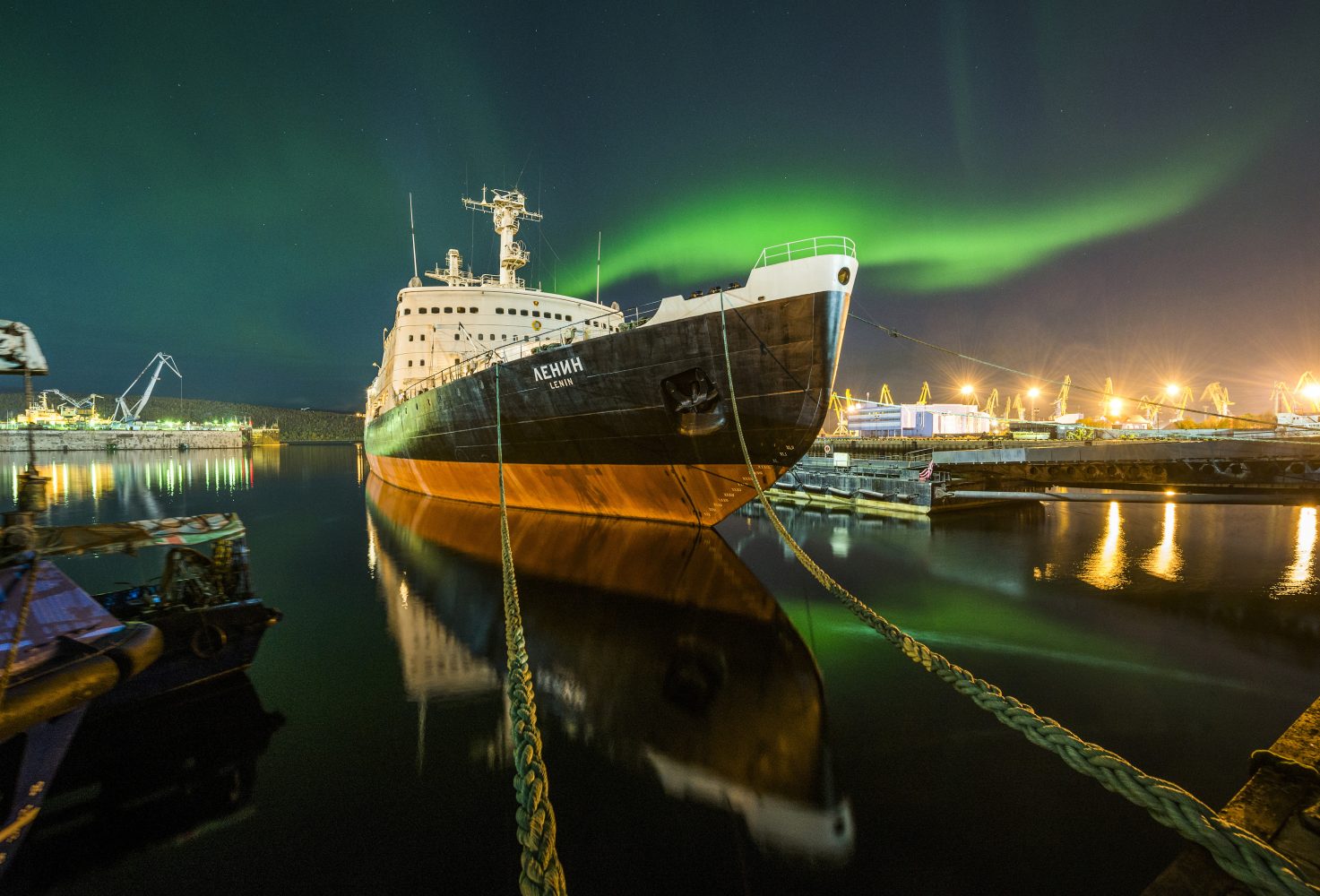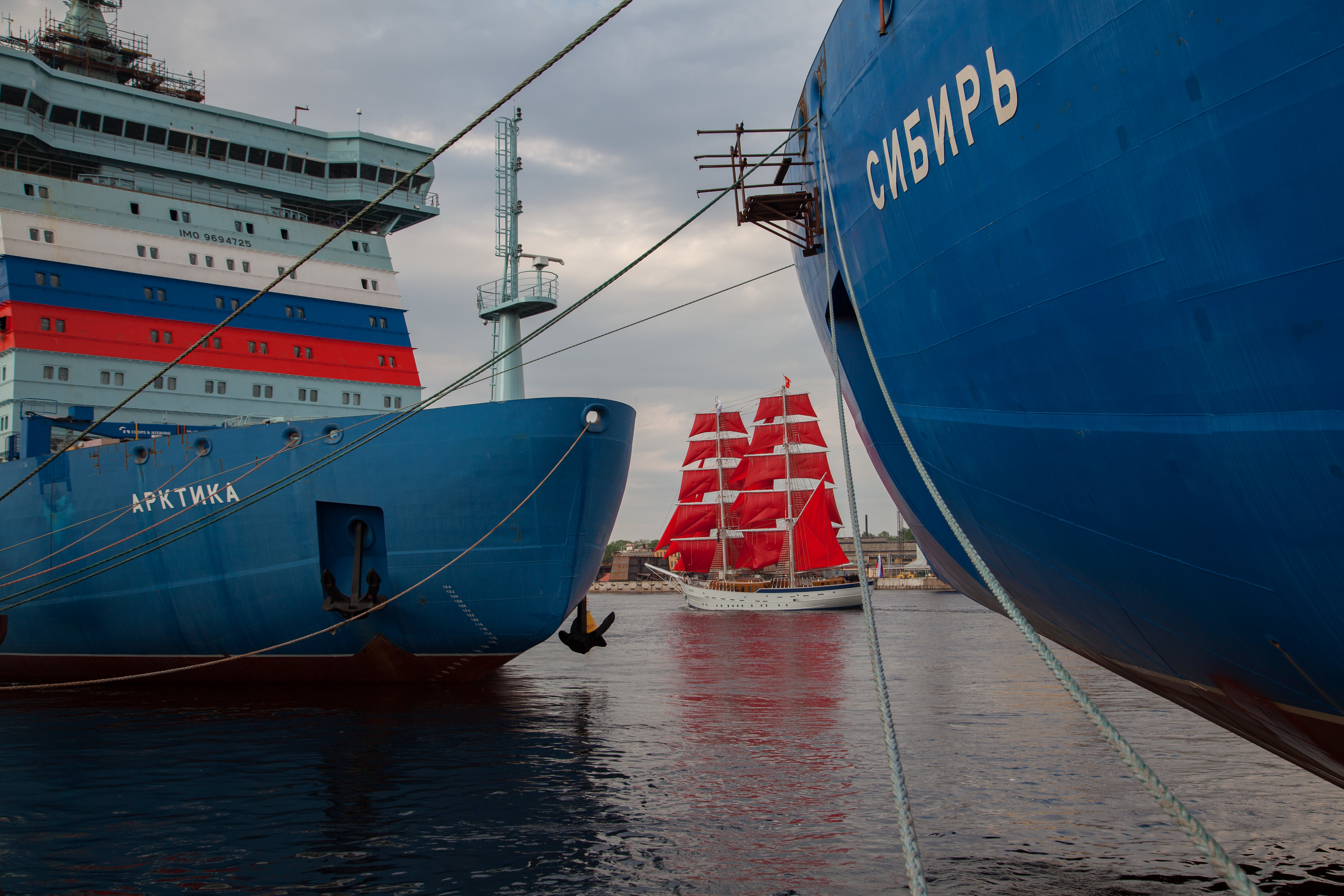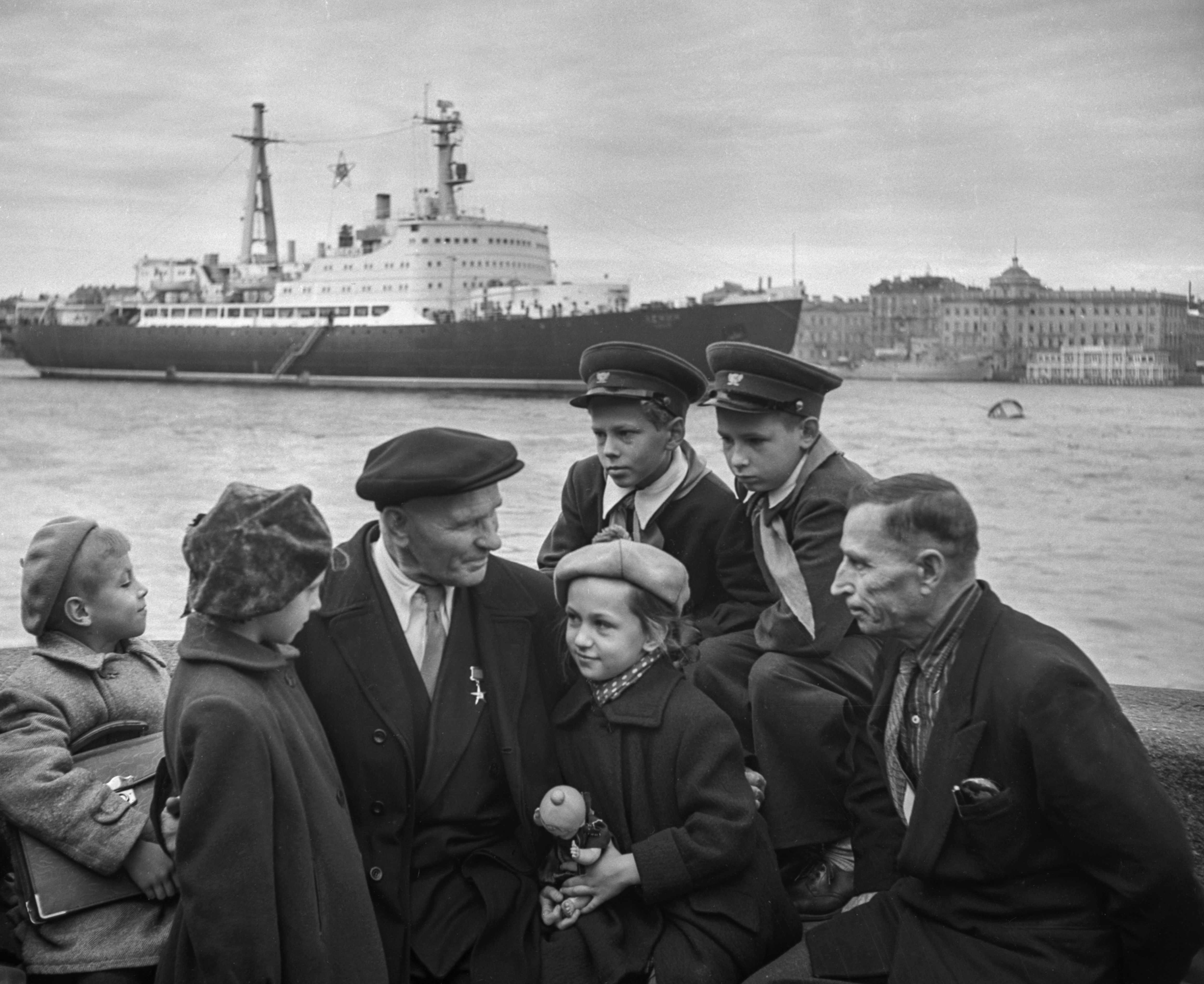
Atomflot: Sixty-Years-Long Road
back to contentsDecember 3rd is celebrated as the birthday of the Russian nuclear fleet. On this day in 1959, the world’s first nuclear icebreaker Lenin run up the national flag. Since then, nuclear icebreakers have been efficiently performing their main function of escorting ships on the Northern Sea Route in the Arctic Ocean.
Why does the Arctic need nuclear icebreakers? Are diesel-powered ships not enough? No, they aren’t. Nuclear icebreakers are much more powerful. For example, Project 10520 design icebreakers built in the 1970–1990s were able to travel through 2.25-meter ice. At the same time, Project 97A diesel-electric icebreakers built in the 1960–1980s could navigate through one-meter thick ice only. Another important advantage of nuclear icebreakers is that they do not need frequent refueling, which is not easy in the Far North. Nuclear icebreakers do not produce polluting emissions and oil spills are impossible.
On the long Northern Sea Route
In the early 1970s, icebreakers Lenin, Arktika and Sibir made year-round navigation along the western part of Russia’s Arctic coast possible. This was and still is essential for the delivery of food and equipment to and shipment of products from local companies. Atomflot’s icebreakers are indispensable for the success of the Northern Sea Route. The development strategy approved by the Russian government in December 2019 provides for the year-round navigation to be established through the entire corridor. It is expected to become a national and international transportation route between Europe and Asia by 2035.

Here is a recent example of Atomflot’s far-reaching routine. In March 2020, nuclear LASH (lighter aboard ship) carrier Sevmorput left Arkhangelsk for the Gyda Peninsula after scheduled dock repairs, carrying 20,000 tons of cargo for the Arctic LNG 2 project, including reinforced concrete structures, pipes, steel structures, construction machinery and electrical equipment. Already on April 22, Sevmorput set off for the Severnaya Bay (Alexandra Land Island, Franz Josef Land) to deliver concrete slabs, containers, construction materials and vehicles, reaching the destination three days later. Vaygach icebreaker prepared a passage for Sevmorput to approach the unloading point on fast ice. After that, Sevmorput returned to Murmansk to take the second shipment of cargo on board.
From construction to decommissioning
Atomflot is renewing its fleet in anticipation of much more freight traffic on the Northern Sea Route. Construction of new icebreakers began in the 2010s. Three Project 22220 icebreakers Arktika, Sibir and Ural are already afloat. The next icebreaker Yakutia will be laid down on May 26. On April 23, Atomflot and Zvezda Shipyard signed a contract for the construction of a next-generation icebreaker Lider, which is to be built according to the new Project 10510 design. The contract was signed remotely due to the coronavirus quarantine. Atomflot CEO Mustafa Kashka was in Murmansk, while Sergey Tseluyko, Managing Director of Zvezda, was in Vladivostok. According to the agreement, Lider will be commissioned before the end of 2027 to become the world’s most powerful nuclear icebreaker: the total capacity of its propulsion system will amount to 120 MW. Given such immense power, Lider will be able to sail through more than 4-meter thick ice. Its main task will be to escort ships along the entire Northern Sea Route all year round and look for new high-latitude routes for commercial purposes.
Atomflot is also involved in disposal of spent nuclear fuel and nuclear waste from icebreakers and submarines. Two major ongoing projects in this field are dismantling of the Lepse depot ship and removal of spent nuclear fuel assemblies from the depot in the Andreev Bay. Dismantling of Lepse is planned to be completed in 2022. Spent fuel assemblies are already being unloaded from the radioactive waste repository in the Andreev Bay.
Nuclear icebreakers themselves are also decommissioned and dismantled. The Sibir icebreaker was towed to Nerpa Shipyard for dismantling in 2016. This is where the nuclear propulsion unit was dismantled and the ship space was decontaminated. In October 2019, the icebreaker was delivered to Atomflot’s mole, where it will be moored until late 2021 while the remaining contaminated systems and equipment will be dismantled. It is planned to auction off ‘clean’ structures as steel scrap in 2022. Dismantling of contaminated machinery on Arktika is still underway.
Icebreaking legend
May 6, 1960: the world’s first nuclear icebreaker Lenin is put into operation in Murmansk.
October 17, 1961: personnel of the drifting ice station disembark from the icebreaker for the first time ever. Until then, all drift stations were delivered by air, which was more difficult and expensive. Icebreakers allowed approaching the required point and delivering much more cargo and equipment, not just bare essentials.
November 14 — December 1, 1970: diesel electric powered freighter Gizhiga was escorted from Murmansk to Dudinka and back during the first winter navigation in the Arctic. The purpose of the voyage was to estimate the possibility of escorting ship convoys in winter to deliver goods to Norilsk Nickel and return with its products.
May 26 — June 22, 1971: Lenin makes its first non-stop high-latitude voyage to Pevek (Russia’s northernmost town). The nuclear icebreaker escorted Vladivostok, a diesel electric icebreaker, to operate in the Chukchi Sea during the summer navigation. Icebreakers surveyed high-latitude routes to the north of the Novaya Zemlya Archipelago and the New Siberian Islands.
March 1976: diesel electric freighter Pavel Ponomaryov is escorted to Yamal to make the first voyage through ice in early spring.
1989: Lenin icebreaker is decommissioned with its reactors shut down, propellers dismantled and the ice reconnaissance helicopter put out of operation. In thirty years of operation in the Arctic, Lenin escorted 3,741 ships, traveled 654,400 nautical miles, including 560,600 miles in ice-covered waters, which comparable with thirty voyages around the world along the equator.

LENINGRAD, USSR. September 12, 1959. Nuclear-powered icebreaker “Lenin” on the Neva. Worker of the Putilov factory, participant of the storming of the Winter Palace, Hero of Socialist Work Alexander Miroshnikov (C) tells the young residents of Leningrad about the history of the ship. G.Koposov/TASS
ÑÑÑÐ. Ëåíèíãðàä. 12 ñåíòÿáðÿ 1959 ã. Àòîìíûé ëåäîêîë “Ëåíèí” íà Íåâå. Ïóòèëîâñêèé ðàáî÷èé, ó÷àñòíèê øòóðìà Çèìíåãî äâîðöà, Ãåðîé Ñîöèàëèñòè÷åñêîãî Òðóäà À.Ê. Ìèðîøíèêîâ (â öåíòðå) ðàññêàçûâàåò þíûì ëåíèíãðàäöàì îá èñòîðèè ñóäíà. Êîïîñîâ Ã./Ôîòîõðîíèêà ÒÀÑÑ
February 29, 2000: Lenin Nuclear Icebreaker Foundation is established at the initiative of former captain Boris Sokolov and under the direction of Arctic explorer Anatoly Aleksandrovich.
May 5, 2009: Lenin is brought to anchor offshore Murmansk passenger terminal and converted into a museum.
October 2018: Lenin icebreaker is officially awarded the status of a national cultural heritage site.




